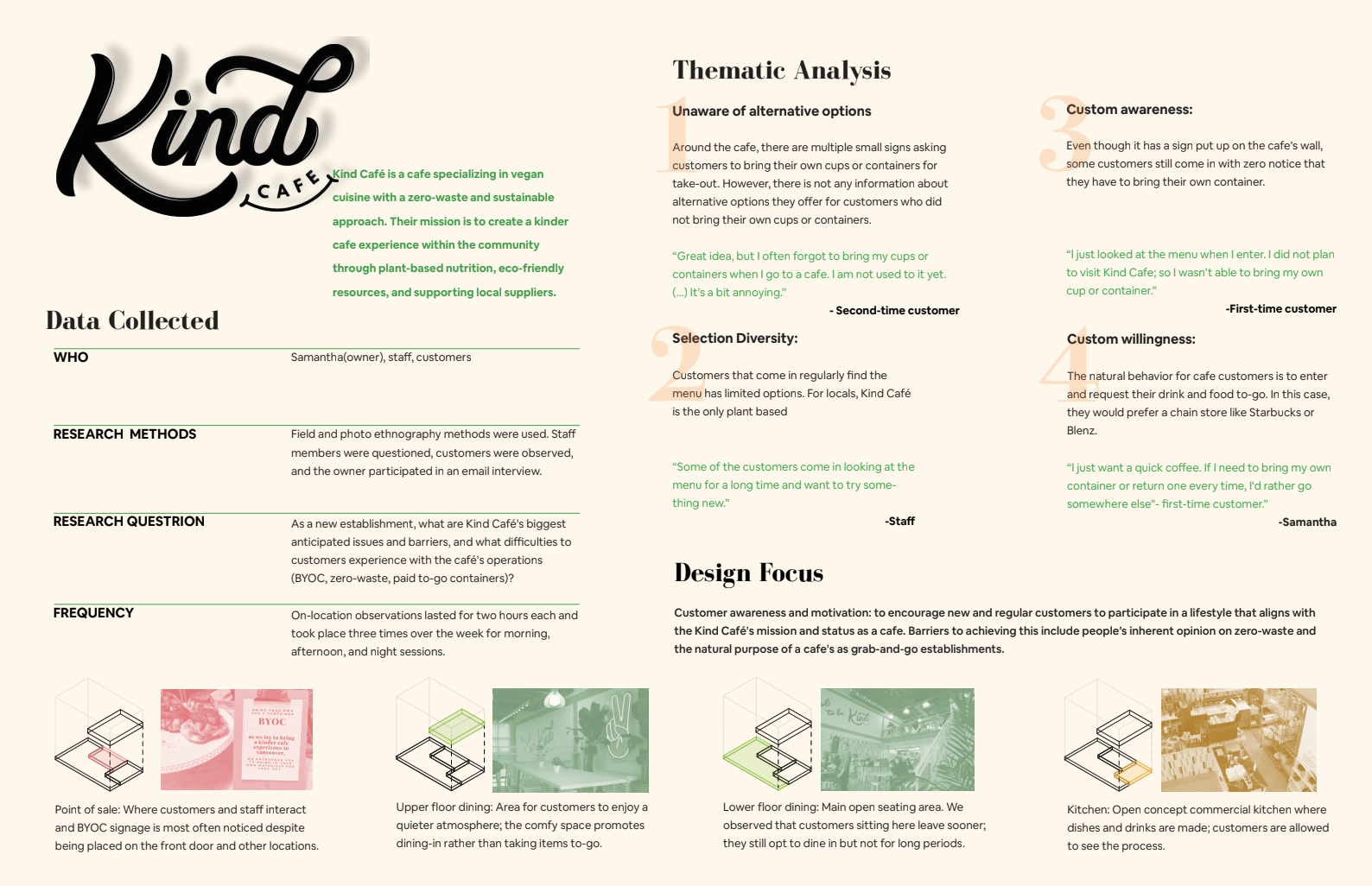KindBox
🍛
Service Design + Product Design
-
A mealbox kit
- One online ordering app
- Enhance customer retention
-
Attract potiental customers
-
Align with the company's goal & mission
A design solution that addresses the brand marketing needs of @kindcafeyvr. The objective is to enable Kind Café and its customers to actively contribute to environmental preservation by adopting a zero-waste approach through an innovative online ordering app/kit. In addition, this solution aims to enhance brand visibility, reputation, and social impact.
︎︎︎ Type: Academic Group Project
︎︎︎ Role: User-Research, UX/UI Design, Product Design
︎︎︎ Type: Academic Group Project
︎︎︎ Role: User-Research, UX/UI Design, Product Design
︎︎︎
Tool: Illustrator + Photoshop + AfterEffect + ProtoPie
︎︎︎
Duration: 11 weeks in 2019


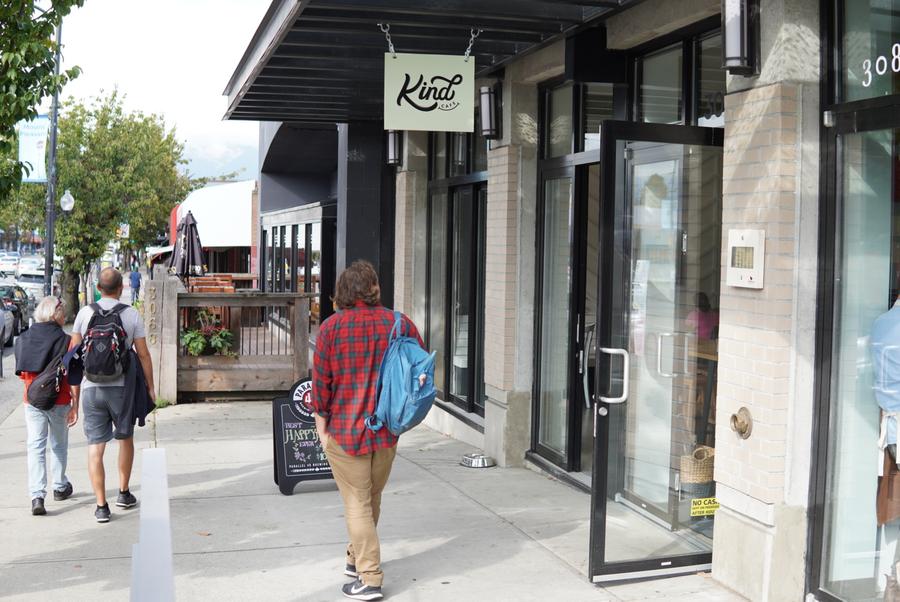

Identify the need
The café ' s mission is to create a kinder cafe experience. Its concept of being an eco-friendly and zero-waste café is an eye-catching idea that will interest the public. But according to the owner, customers do not have a clear understanding of sustainability and how such a lifestyle works, almost nonexistent marketing strategy does not serve its role successfully.
Ethnography Data research
After went through onset observation and interviewed some customers, some problematic area arises.
Low awareness of alternative take-out options for customers;
Low awareness of the café’s BYOC policy;
Lack of knowledge in menu items, especially for customers who are not familiar with plant-based foods.
I created this infographic to help the team better understand the problem.
Design Focus
Our goal is to raise awareness among customers about the café' s commitment to zero waste. By encouraging the reuse of materials and discouraging the use of disposable items, we want to minimize waste and promote a sustainable lifestyle.
How? Through convenient and non-invasive services and products that benefits both Kind Café and our customers alike.

Target Audience
With 71.1% of our customer base consisting of university-aged individuals, our café caters directly to the needs and preferences of this demographic. According to our reaserch, the average college student produces a whopping 640 pounds of trash annually.

Design Process
Design Process
Our team started by making a user journey and asking “How might we?” question depend on the pain point and high point which we found from the Kind Café customer.
-How might we create a sense of understanding & community for the new customers who are uninformed & misinformed about what it means to practice Zero Waste?
-How might we create space for more digital interaction

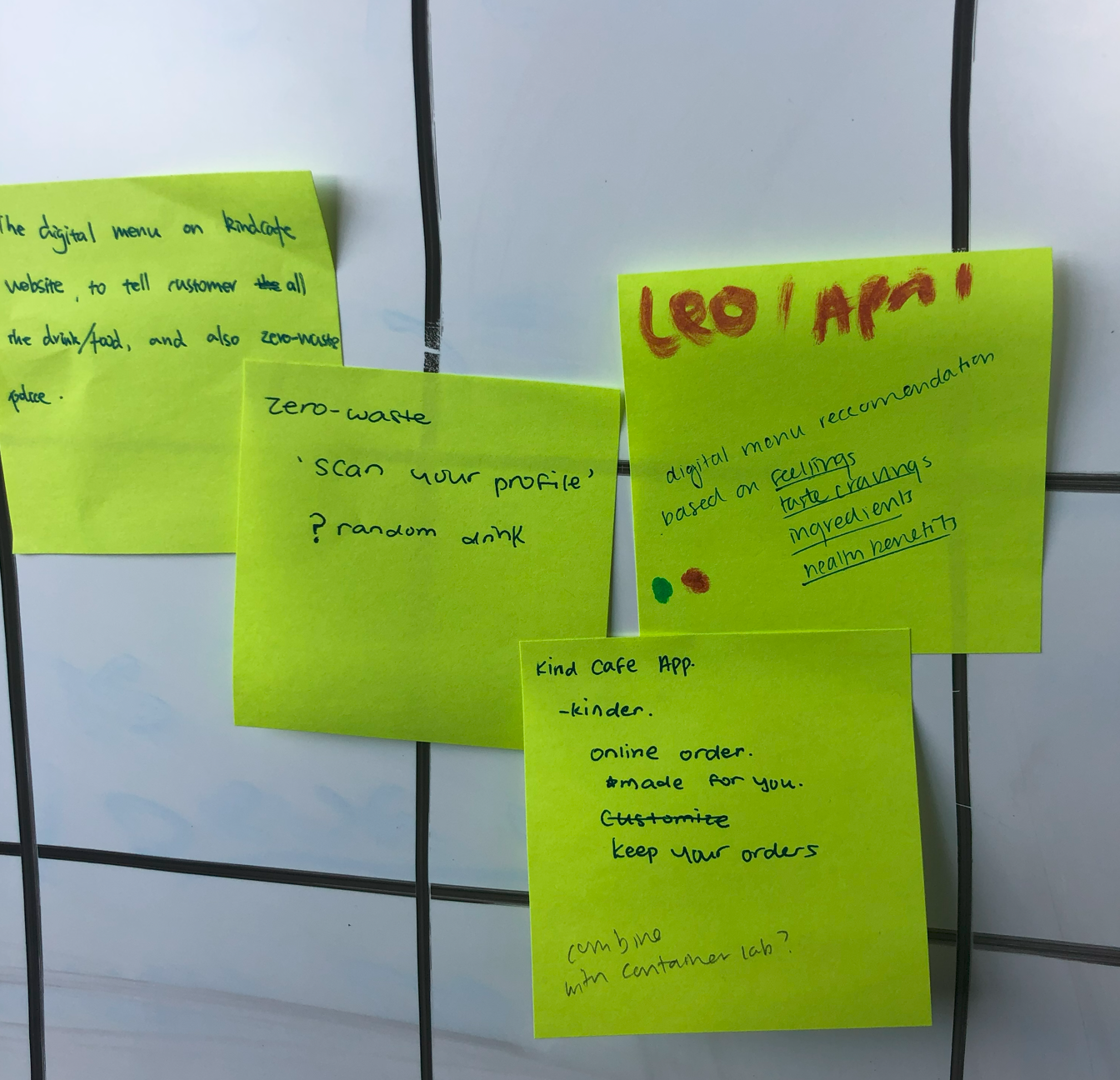
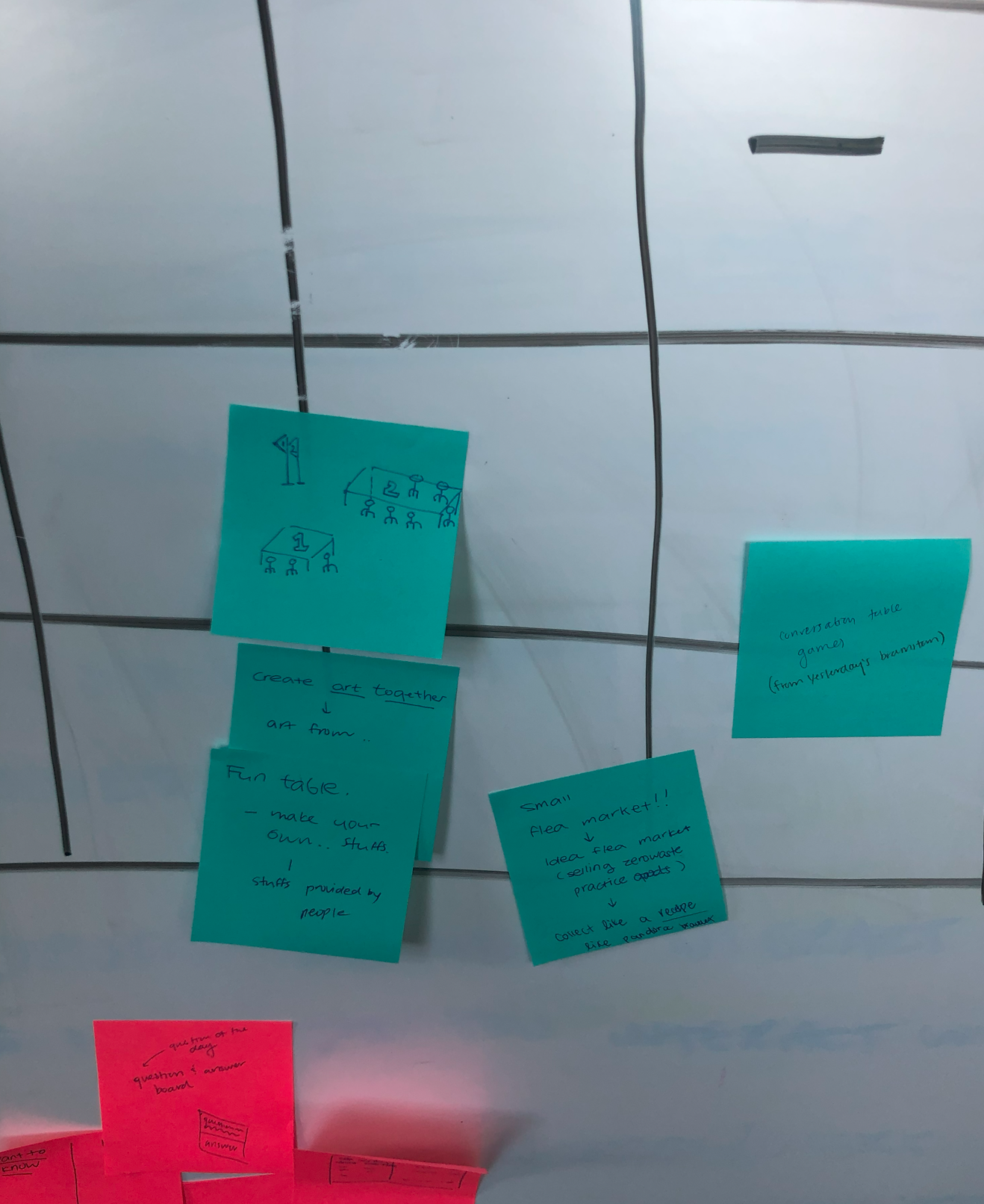


Our team started by making a user journey and asking “How might we?” question depend on the pain point and high point which we found from the Kind Café customer.
-How might we create a sense of understanding & community for the new customers who are uninformed & misinformed about what it means to practice Zero Waste?
-How might we create space for more digital interaction...




User Journey & Pain Point



Ideate & Decide
We started to brainstorm our ideas using "Crazy 8's". In order to avoid missing some parts, we called back "how might we...", we had six rounds of thinking for differnt “how might we…”, pasted our ideas / sketches on the whiteboard each round.
In the end couple ideas stood out.


Upon further discussion with the café owner, we have come to realize that some of the previously mentioned ideas may not be feasible for implementation.
Final Solution
After couple meetings. We created KindBox, a meal program that offers students Kind Café food and drinks at discounted prices in order to incentivize them to take part in zero-waste practices. This solution allows users to save time, eat healthy and make a difference to the environment. Meals are ordered online and prepared for in-store pick-up at the café.
KindBox Program has two parts:
1. a mobile app that allows students to view Kind Café's menu and order ahead, there’s also an impact section to show how much they helped the caféeliminate waste
2. the lunch box, which is the physical element that helps them actively practice zero-waste.



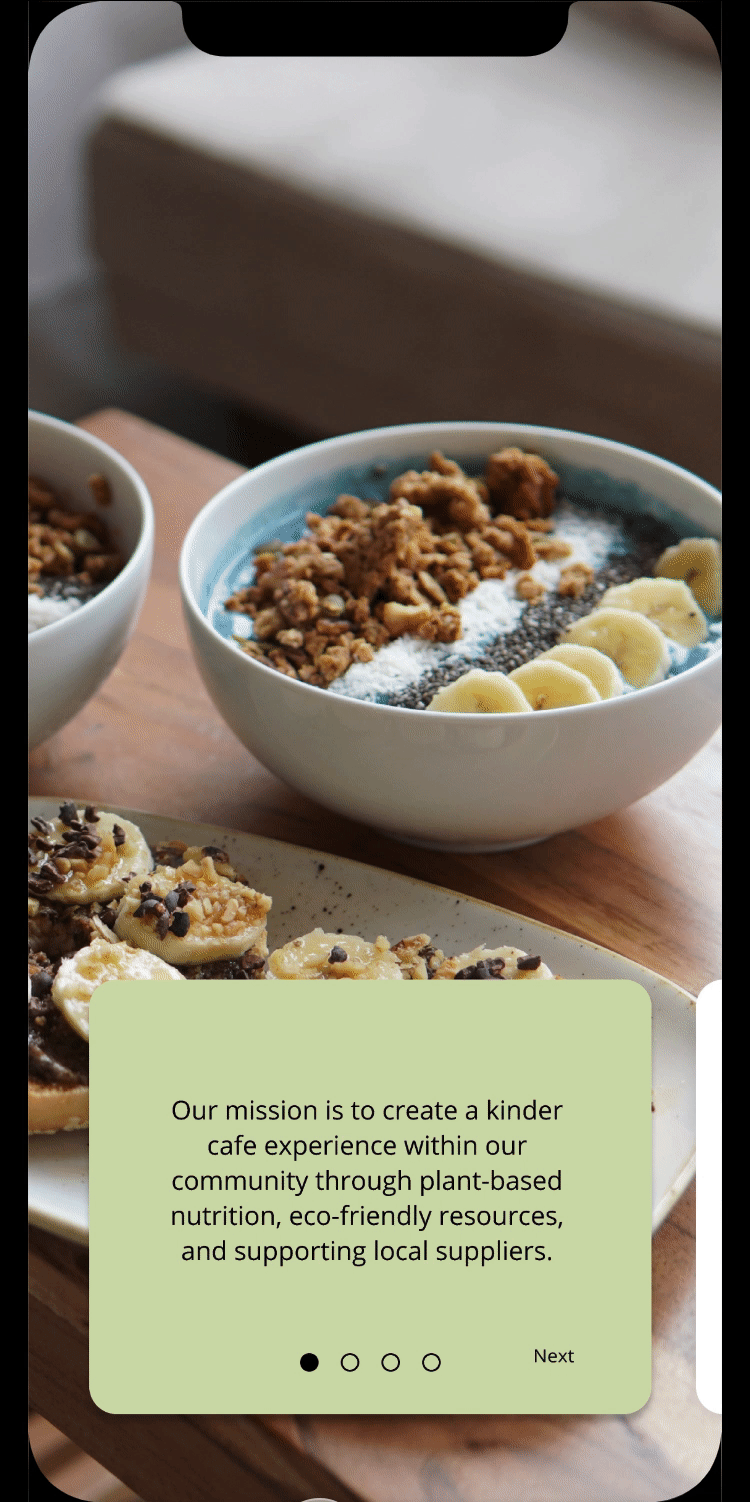
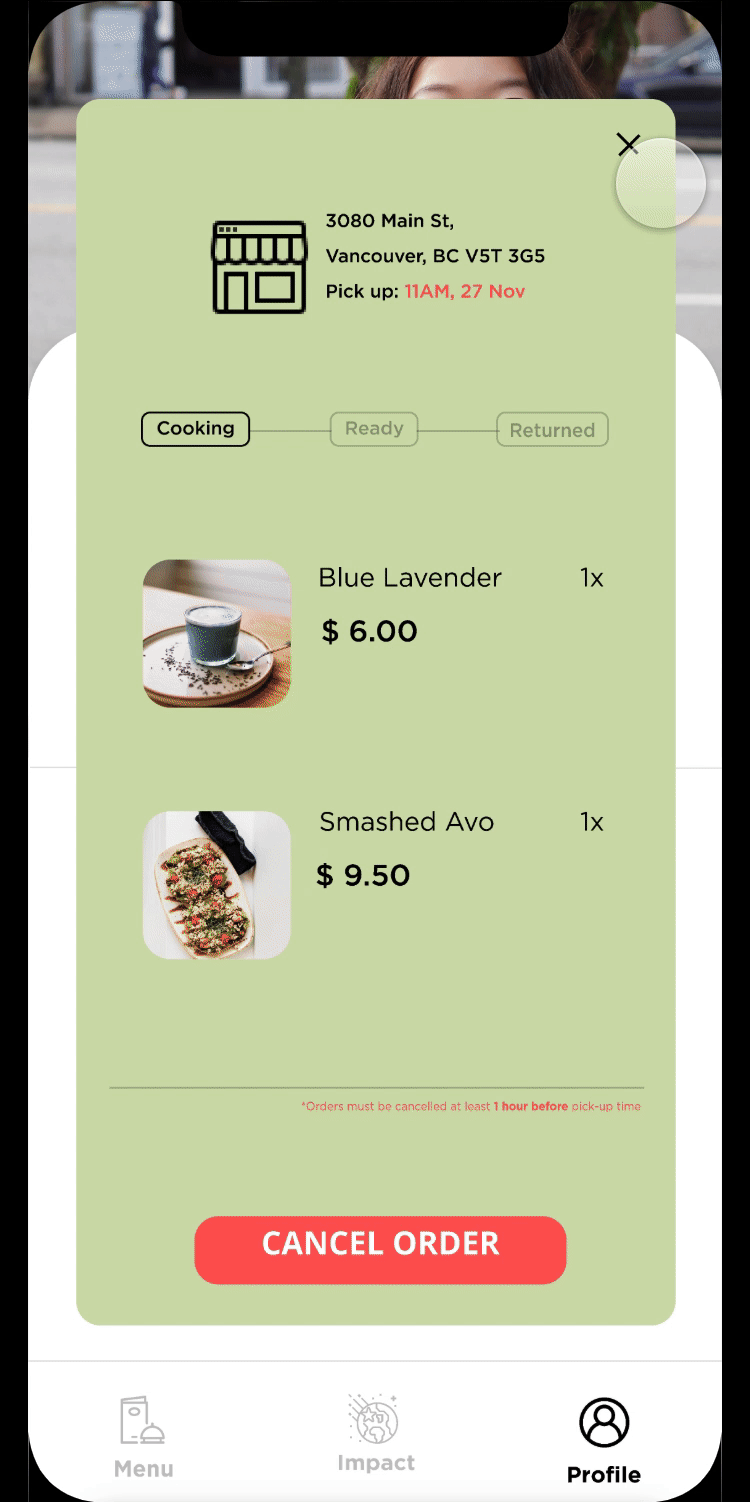


Reflection
Reflection
During my participation in this design course collaboration, I had the valuable opportunity to work with a real client for the first time. Throughout the process, I gained insights into understanding the diverse mindsets of both our client and their customers. While the solution we created may not be flawless, I have recognized areas for improvement. Given more time, I would like to enhance the app by incorporating educational resources on zero waste for users to expand their knowledge. Additionally, I aim to establish further guidelines and rules to optimize the functionality and effectiveness of the KindBox.
